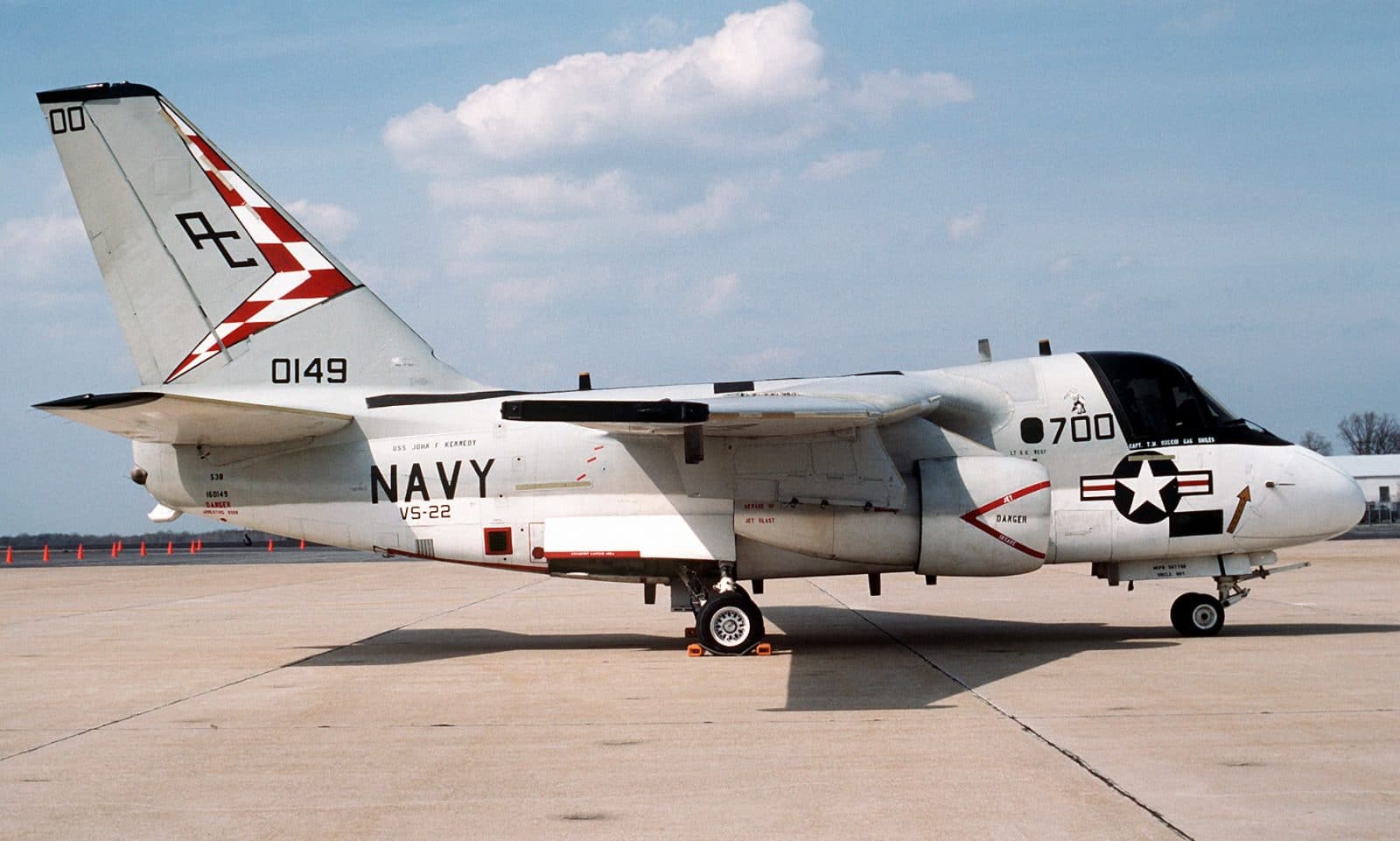Built to replace Grumman’s venerable S-2 Tracker antisubmarine aircraft, the Lockheed S-3A Viking entered service on 20 February 1974 with Air Antisubmarine Squadron FOUR ONE (VS-41) Shamrocks. The first operational deployment of a Viking-equipped squadron took place when VS-21 Fighting Redtails went to sea with Carrier Air Wing ONE (CVW-1) aboard the modified Kitty Hawk-class carrier USS John F. Kennedy in 1975. The Viking would go on to serve for 42 years. Sixteen of them were modified for the electronic warfare role as ES-3A Shadows. Six of them became long-range carrier on-board delivery (COD) US-3As. However, the majority of fleet Vikings, or “Hoovers”, spent most of those years either finding things that needed finding or passing gas that needed passing. This is the story of one of those fleet Vikings.

Is it proper to say the last of the last? In the case of this particular aircraft, perhaps. The very last of 186 S-3A Vikings built by Lockheed for the US Navy rolled off the company’s Burbank production line during August of 1978. That aircraft, S-3A Bureau Number (BuNo) 160607 (CN 394A-1187), was accepted by the Navy that same year and was assigned to VS-22 Checkmates. The Checkmates were part of Carrier Air Wing THREE (CVW-3) back then, and 160607 deployed seven times, at least some of them as side number 707, with VS-22 and CVW-3 aboard the Forrestal-class carrier USS Saratoga (CVA-60) and the USS John F. Kennedy (CVA-67).

In 1988, S-3A BuNo 160607 was converted to the S-3B specification by Lockheed, which added a number of new sensors, avionics, and weapons systems, including the capability to launch the McDonnell Douglas AGM-84 Harpoon anti-ship missile. The S-3B could also be fitted with a buddy store refueling pod for passing gas to other refueling probe-equipped aircraft. After becoming an S-3B, BuNo 160607 went to a new squadron: VS-28 Gamblers. The Gamblers were part of CVW-6 at that time and the jet deployed four times, at least some of them as side number 702, with VS-28 and CVW-6 aboard the carrier USS Forrestal (CVA-59) before Forrestal was retired. VS-28 was disestablished on 1 October 1992.

After VS-28 was disestablished, the last Viking was re-assigned to the Naval Air Warfare Center (NAWC)- Aircraft Division at Naval Air Station (NAS) Patuxent River in Maryland. The jet served as a test platform and research aircraft at NAWC Pax River until she was retired in 2005. The National Aeronautics and Space Administration (NASA) acquired her for research soon thereafter. Today the last Viking built wears registration number N601NA and NASA tail number 601. Since then the remaining “War Hoover” S-3B Vikings in Naval service have all been retired- the last of them in 2016. N601NA is literally the very last S-3B Viking. BuNo 160607/N601NA may be the only aircraft that was both the last one of its kind built and the last one of its kind to be airworthy.

NASA has used the jet for testing the effects of ice accretion on aircraft wings and tails, as well as assessing anti-icing systems for aircraft. The first research flights originated in Aguadilla, Puerto Rico, and seek to characterize the icing conditions that exist in the atmosphere’s tropical convective layer. Since 2015 the last Viking has been listed as inactive by NASA, who bases the aircraft at Glenn Research Center next to Cleveland Hopkins International (KCLE) in Cleveland, Ohio. This video of the last Viking in flight at EAA AirVenture 2018 was uploaded to YouTube by AirshowStuffVideos.
[youtube id=”h0Mvpk3jsVM” width=”800″ height=”454″ position=”left”]


Still flying as of 02/11/2020
I see you mentioned 186 Vikings were built. Most often I see references to a total of 187, although Wikipedia says 188. I don’t know if maybe one (of 187) or two (of 188) were only test airframes and not put into service.